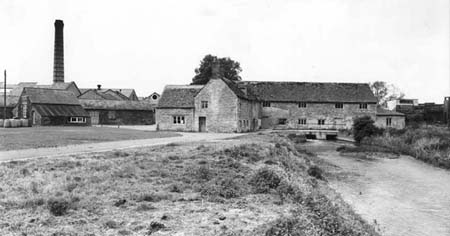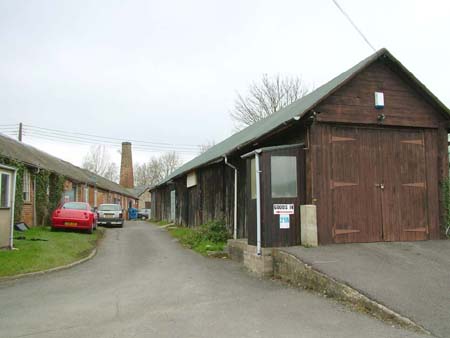Crawley Mill
Situation
Three miles downstream from Worsham on the south side of the
river Windrush.
Physical structure
 Crawley Mill, the site complex showing the 19th century chimney.
The original Crawley Mill is a two-storey Cotswold stone
structure built across the mill race. It had an enclosed water
wheel with curved iron paddles that drove spinning and other
machinery in the mill. This wheel seems to have survived into
the 1960s although water power had not been used there for
around forty years by this time [2]. A small, square brick
chimney stack at the rear suggests that water power was assisted
by a steam engine from around the 1860s. The building is of
traditional construction and appearance, with thick load-bearing
walls and timber beams upon which the upper floor is supported
[3].
 Crawley Mill, the sulphur bleaching sheds. Owners
The Collier family originally owned Crawley Mill and used it for
blanket production. W. Smith and Co. took it on after them,
later merging with Philips to become Messrs W. Smith and J.N.
Philips, but they in turn were acquired by the General Guarantee
Corporation in 1967. After further takeovers Smith and Philips'
were bought out by Moderna Ltd of Yorkshire, who made all the
staff at Crawley Mill redundant in 1974, except for four people
employed in raising blankets. The mill was closed completely the
following year.
What was the site used for?
Originally used for most stages of blanket production by the
Colliers. Smith's used the site chiefly for fulling, bleaching
and dyeing operations until they re-equipped it in the 1930s;
after this it was used largely for blanket finishing processes
[5].
Crawley Mill remained open throughout the Second World War for
finishing blankets at a time when Bridge Street Mill, Smith's
other premises, was temporarily closed and its workforce had
been transferred to Early's at Witney Mill.
Clare Sumner
|



